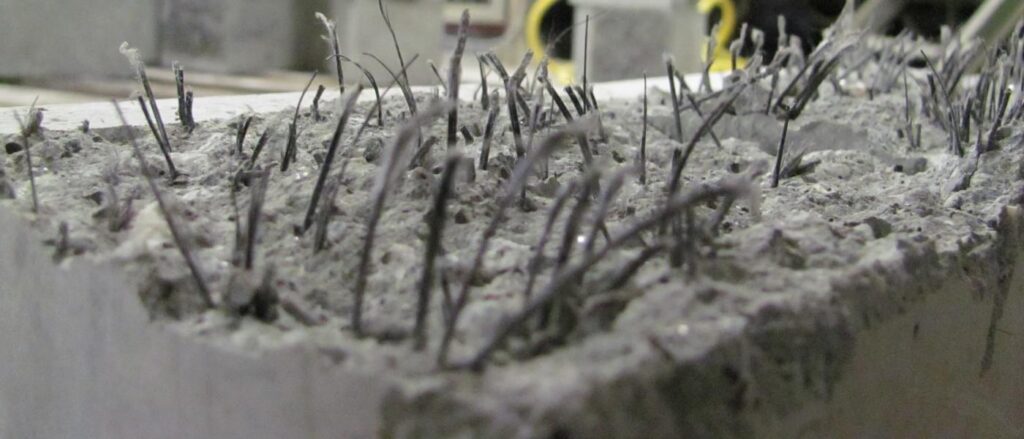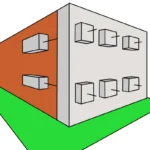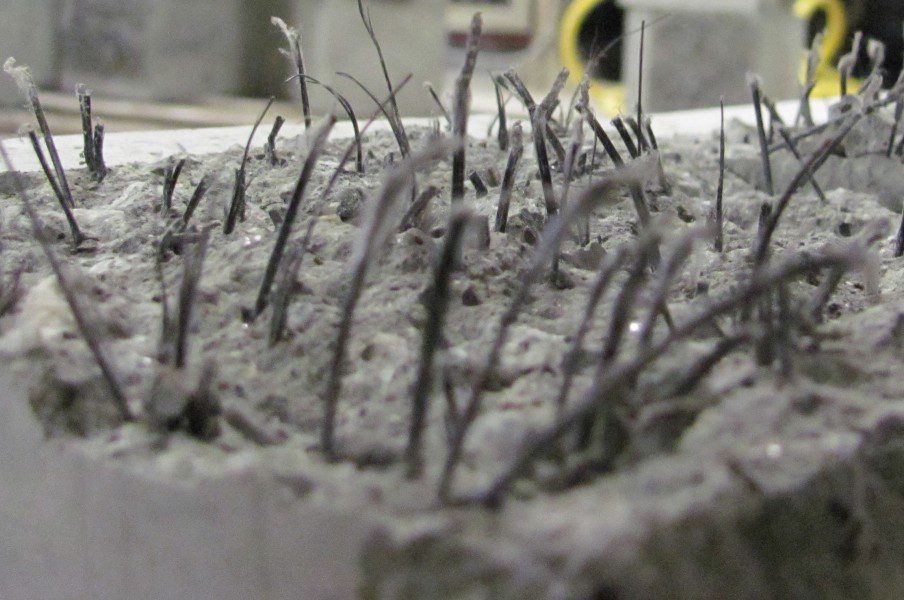The revolution of steel fibers in pavements is transforming the construction industry. These small yet powerful additions significantly strengthen road surfaces, bridges, and airports. Acting as structural reinforcement, steel fibers prevent crack formation, reduce maintenance costs, and increase surface durability, enhancing road safety by resisting impacts and point loads. Steel fibers are paving the way for stronger, safer, and more sustainable pavements worldwide.
What are steel fibers in pavement?
Steel fibers in pavement are small steel strands mixed with concrete or asphalt during the construction process to enhance pavement properties and performance. These fibers are typically made of steel, although they can also be composed of other materials such as stainless steel or hybrid reinforcement fibers that combine steel with other materials like polypropylene.
How do steel fibers work in pavements?
Steel fibers in pavements act as structural reinforcement, improving the mechanical properties and performance of concrete pavement. Their effect relies on the distribution and anchoring of fibers within fresh concrete and their ability to resist stresses and loads. To achieve this, it is necessary to:
- Homogeneous distribution: During concrete mixing, achieving a homogeneous distribution of steel fibers is crucial for them to disperse evenly in the fresh mix. This ensures effective reinforcement throughout the pavement.
- Fiber design plays a key role, as these fibers have hooks or shapes that allow them to anchor into the surrounding concrete as it hardens. This creates a mechanical bond between the fibers and the concrete matrix, preventing displacement during the hardening process, ensuring greater adherence.
In this way, steel fibers in pavements work in several ways to enhance pavement strength and durability:
– Structural reinforcement: Steel fibers act as structural reinforcement, providing greater tensile strength and improving the pavement’s load-bearing capacity.
– Impact resistance improvement: They increase the pavement’s ability to resist impacts and point loads, crucial in high-stress applications such as ports and loading areas.
– Contraction crack control: One of their primary functions is to reduce contraction cracks. As concrete hardens, it tends to shrink, leading to crack formation. Steel fibers act as micro-reinforcements, preventing cracks from spreading, thereby maintaining the structural integrity of the pavement.
– Fatigue resistance: Steel fibers enhance the pavement’s fatigue resistance, meaning it can better withstand repeated traffic loads without developing cracks. This is especially beneficial for roads and pavements subject to heavy loads and intense traffic.
– Load-carrying capacity improvement: Adding steel fibers increases the pavement’s load-carrying capacity, allowing it to support heavier loads without significant damage. This is essential for maintaining surface durability and safety.
Reduced crack propagation: If cracks form in the pavement due to extreme stresses or point damage, steel fibers also help reduce the propagation of these cracks, preventing them from becoming more serious issues.
Less maintenance: Pavements reinforced with steel fibers tend to require less maintenance over their lifespan. This reduces repair costs and extends the pavement’s lifespan.

Photo used with permission from Synthex Fibers
Regulations and standards
Regulations and standards related to the use of steel fibers in pavements are essential to ensure quality, safety, and uniformity in the construction of fiber-reinforced pavements. These regulations vary by region and country and are often issued by construction and engineering regulatory bodies. Here are some key aspects of steel fiber regulations and standards in pavements:
- Design and Dosage: Regulations typically specify design and calculation methods to determine the appropriate amount of steel fibers to be added to the concrete mix. This ensures desired reinforcement levels without exceeding recommended proportions.
- Material Quality Requirements: They establish quality criteria that steel fibers must meet, including aspects such as tensile strength, shape, size, and chemical composition. These requirements ensure that the fibers used are suitable for their purpose.
- Testing Methods: They define test procedures to verify the properties of steel fibers, such as strength and shape. Testing methods allow evaluating whether the fibers meet specified quality standards.
- Mixing and Placement Procedures: They set guidelines for the proper incorporation of steel fibers into the concrete mix, including mixing times, mixing speeds, and other parameters. This ensures uniform distribution of fibers in the pavement.
- Quality Control Requirements: Regulations may include guidelines for conducting inspections and tests during construction to ensure compliance with quality and safety standards.
- Safety: Regulations may also address safety issues, such as worker protection during the handling of steel fibers and the prevention of risks on the construction site.
- Documentation and Record-keeping: Builders are often required to document and record the quantity and type of steel fibers used in the project, as well as the results of quality tests and inspections.
- Updates and Revisions: Regulations and standards may be periodically updated to reflect advances in steel fiber technology and construction best practices.
It is crucial for engineers, architects, and contractors to be familiar with the specific regulations and standards applicable in their region, as non-compliance with these regulations can lead to quality and safety issues in the construction of steel fiber-reinforced pavements. Compliance with these regulations ensures that pavements are safe, durable, and meet specific engineering requirements for each project.
Places where they are already used
Steel fibers in pavements are used in a wide variety of areas and countries worldwide. Their application is not limited to a specific region, as they have become a standard technology in pavement construction in many parts of the globe. Some of the areas and countries where they have been successfully implemented include:
- United States: Steel fibers are extensively used in the construction of roads, highways, and pavements throughout the United States.
- Europe: Several European countries, such as Germany, France, the United Kingdom, Italy, and Spain, use steel fibers in pavements to enhance the durability and strength of their road infrastructure.
- Asia: Most of Asia has already implemented steel fibers, including China, Japan, India, South Korea, Southeast Asia, the Middle East, and Central Asia.
- South America: In countries like Brazil, Argentina, and Chile, steel fibers are used in pavement construction to improve the strength and lifespan of roads and other infrastructure; it is currently a system just reaching Colombia and starting to be used in various projects.
- Canada: Canada has widely implemented steel fibers in pavements to cope with harsh weather conditions and improve the resilience of its roads and runways.
- Oceania: Australia and New Zealand have also adopted steel fiber technology in pavements to enhance the durability of their transport infrastructure.
- Africa: In some African countries, such as South Africa and Nigeria, steel fibers are used in road construction and industrial pavements projects.
Steel fibers in pavements represent a valuable innovation in road infrastructure and pavement construction worldwide. Their ability to enhance durability, strength, and road safety has led to their widespread adoption in construction projects. As technology continues to evolve and adapt to the changing needs of the construction industry, steel fibers promise to continue playing a fundamental role in creating durable and efficient pavements worldwide. Their impact on infrastructure improvement is undeniable and contributes to the sustainable development of our communities and economies.
The images in this post are owned and used under written permission from Synthex Fibers, a distributor of the highest-quality steel fibers on the market. To acquire them, you can contact them here.







Related
Flexible Pavement vs. Rigid Pavement: What’s the Difference?
What is Rigid Pavement?
What is Flexible Pavement?